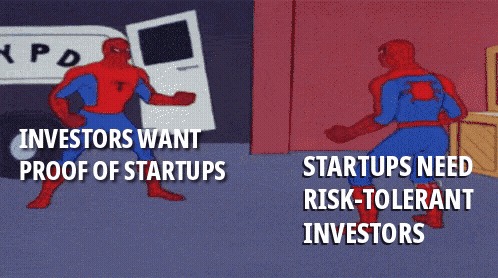The Chicken and Egg of Startups
This weekend, I attended BSidesAugusta. It gave me the opportunity to have several in depth conversations with developers, cyber security professionals, and tech entrepreneurs, the kind that you can only have once people move past niceties of sussing each other out and finally speak truths to one another. You have to understand that I’ve been immersed in growing the technology and startup community in Augusta, Georgia for nearly 15 years now. Don’t get me wrong, in that time we’ve accomplished things that give me tremendous pride, but what pains me is we’re still facing the exact same chicken and egg game that we were facing when I started, and in some ways, it may be even worse.
My day one pitch in this community was a $3m fund to lead an accelerator that would fund 18 startups with a small amount to participate in follow-on funds for the most promising. At the time, we faced the questions everyone is familiar with and exhausted by now:
“Are there really entrepreneurs working on scalable ideas in this market?”
“How can you ensure quality deal flow?”
“What are the most successful startups that have come out of your programs?”
and when leveraging my out of town network, “How much are your local investors putting in?”
After months and months of trying and failing to raise capital, I bootstrapped our startup community itself. That lack of capital forced us to take a different path. We built around memberships, taught classes, and found ways to work within the workforce system. We got better at teaching grit and business fundamentals so entrepreneurs could bootstrap without going bankrupt. But without real capital, we couldn’t fund the moonshots that might have changed our economy. What we needed was risk-tolerant investment.
And I’m sorry to say this, but most truly transformative businesses require millions of dollars in capital to develop products and expand user reach before they can even truly contemplate what the right revenue model is to provide a return on that capital.
This is why, in the dance between what comes first; startups or investment, if your goal is to build a true technology hub, the answer has to be investment.
Why?
Here’s what happens when investment capital is not risk tolerant.
Startup founders, especially technologists, are driven to actually solve problems. As an example, I attended a talk from Sharon Martin on click fraud. For those that don’t know, this is the practice of setting up bots that exploit Google’s ad network to drive fake traffic through ads, completing full click-through and conversion events, even filling out forms. This practice accounts for nearly 30% of all online advertising traffic and costs business owners over $40 billion a year in advertising spend on fraudulent activities.
As I listened to her talk, I kept thinking to myself, “This is a massive startup opportunity.” After the event, I asked Sharon, “how would you actually solve this?” And herein lies the challenge.
She talked through several strategies to make incremental improvements in the cat and mouse game of bot prevention, but shared that to really solve it there are only two ways.
Google, Microsoft, and their competing ad networks are incentivized to tolerate click fraud as they generate billions of dollars in revenues each year from it and face no legal consequences. This is in many ways either a regulatory or law enforcement issue, which our institutions have repeatedly proven they lack the will to address.
Build a competing ad network that takes a serious approach to eliminating click fraud that makes enough of a dent into online advertising market share that the competing ad networks take notice and implement the necessary reforms to make the illegal activities they are funding not worth it.
And here’s the crux, bootstrapping a rival ad network is virtually impossible, or at least seems so upfront. Doing so involves developing a cyber security layer within core ad technologies AND achieving 100s of millions of pageviews to reach a reasonable level of financial sustainability for a business. Further, because our local capital markets are so risk averse, it has conditioned Sharon, and others like her to be extremely wary of taking capital if they don’t feel fully assured that their business will succeed.
In my time in Silicon Valley, one key distinction that always felt endemic to its culture was a curiosity towards the possible that instilled in people a willingness to place a bet. They knew that bet would, in all likelihood fail, but IF it didn’t, then jackpot!
My question to our leaders is: Where do we want our city to be in another fifteen years?
Until we can substantially increase our tolerance for risk as a community, our best and brightest will keep aiming for base hits, staying in business, and making incremental gains instead of pursuing the $40 billion opportunities right in front of us. Fifteen years from now, I, or whoever follows me, will still be answering the same questions we have faced since the beginning.
But with a serious and sustained investment strategy, we can move beyond bootstrapping small wins and finally take on the bold market opportunities we have been talking about since we began.
Call to Action
Do you have insight into a market opportunity?
Help us prove this community has the ideas and talent that should be invested in.
Are you interested in investing in local startups?
Let us know so we can connect enough investors to build a fund.
Learn more about Sharon


